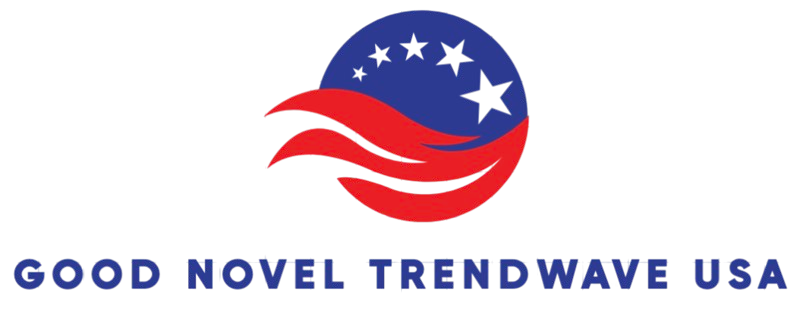The Benefits of Proposal Automation in Modern Business Practices
In today’s fast-paced business world, efficiency is key. With the growing importance of meeting client needs swiftly, many organizations are turning to proposal automation to streamline their proposal processes. This approach simplifies the way proposals are created, managed, and delivered, saving valuable time and resources.
🚀 Unlock New Opportunities! 🚀
Ready to boost your income, learn new skills, and achieve financial freedom? Explore these highly recommended offers selected just for you!
Fast Wealth
Discover HowLive Chat Jobs - You have to try this one
Start Chatting & Earn!Paid Online Writing Jobs - Get Paid To Do Simple Writing Jobs Online
Get Paid To Write!Cellphone Cash, Over $2 Million spent in testing!
Earn With Your Phone!Writeappreviews.com - Get Paid To Review Apps On Your Phone
Review Apps & Get Paid!InstaDoodle
Explore InstaDoodle!John Thornhills Ambassador Program - OVER 1 MILLION PAID TO JVs SO FAR
Join The Program!Get Paid to be a Virtual Online Assistant - Remote Work Jobs
Become A VA!The GPT Creator Club
Join The Club!One major benefit of proposal automation is the enhanced speed it brings to your workflow. By using specialized software, you can quickly generate proposals tailored to client needs. This means less time spent on repetitive tasks, allowing your team to focus on what truly matters—building relationships and closing deals. As you adopt these systems, you’ll likely notice a significant reduction in the time it takes to prepare and submit proposals.
🚀 Unlock New Opportunities! 🚀
Ready to boost your income, learn new skills, and achieve financial freedom? Explore these highly recommended offers selected just for you!
Fast Wealth
Discover HowLive Chat Jobs - You have to try this one
Start Chatting & Earn!Paid Online Writing Jobs - Get Paid To Do Simple Writing Jobs Online
Get Paid To Write!Cellphone Cash, Over $2 Million spent in testing!
Earn With Your Phone!Writeappreviews.com - Get Paid To Review Apps On Your Phone
Review Apps & Get Paid!InstaDoodle
Explore InstaDoodle!John Thornhills Ambassador Program - OVER 1 MILLION PAID TO JVs SO FAR
Join The Program!Get Paid to be a Virtual Online Assistant - Remote Work Jobs
Become A VA!The GPT Creator Club
Join The Club!Another key advantage is consistency. Automated proposal systems often come equipped with templates and pre-approved content. This ensures that everyone on your team uses the same language, branding, and messaging. As a result, your proposals will not only look professional but also reflect a unified voice that reinforces your brand identity. Offering a consistent experience helps build trust with potential clients.
AI Automation Workflow Get today
Moreover, integrating proposal automation can improve accuracy. Human error is inevitable during manual processes, especially when handling complex documents. Proposal automation reduces these risks by utilizing features like auto-fill, which pulls in data from existing records. With less chance of errors creeping in, you can present a polished and professional proposal that instills confidence in your clients.
Selecting the right proposal automation tools can significantly enhance your team’s collaboration. Many platforms allow multiple users to generate, edit, and comment on proposals in real-time. This fosters better communication and teamwork, ensuring that everyone stays on the same page throughout the proposal development process. This collaborative effort leads to higher-quality proposals that are well-rounded and more compelling.
AI Automation Workflow Get today
Cost-efficiency is another strong point in favor of embracing proposal automation. By significantly shortening the proposal cycle, you save on labor costs associated with proposal preparation. More importantly, quicker turnaround times can lead to higher conversion rates, ultimately resulting in increased revenue for your business. Investing in automation now can lead to substantial long-term financial benefits.
Additionally, proposal automation provides valuable insights into your processes through analytics. Most systems track how proposals perform and how often they are accepted or rejected. Analyzing these metrics allows your team to identify areas of improvement, helping you refine your proposal strategy over time. Understanding what works and what doesn’t will enable you to make informed decisions that drive your business forward.
AI Automation Workflow Get today
- Increased Speed: Create and send proposals faster, allowing for quicker responses to client inquiries.
- Consistency: Use standardized templates that promote brand identity and professionalism.
- Accuracy: Minimize manual errors through automated data entry and formatting.
- Enhanced Collaboration: Facilitate teamwork with tools that support real-time editing and communication.
- Cost Efficiency: Reduce labor costs and improve conversion rates through faster proposal cycles.
- Insightful Analytics: Track proposal performance to refine strategies and improve effectiveness.
Integrating proposal automation into your business practices can revolutionize how your team operates. Not only will you benefit from increased speed and accuracy, but you’ll also foster a collaborative environment that promotes growth. As businesses continue to pivot toward more efficient and effective processes, now is the perfect time to leverage the advantages that proposal automation brings.
As you consider adopting proposal automation, remember that it’s not just about streamlining your current processes; it’s about enhancing the overall client experience. Automated proposals can create a smoother, more personalized journey for potential customers, positioning your organization as a proactive, professional choice in the competitive market. In an age where client expectations are higher than ever, meeting these demands through automation can set your business apart.
Key Features to Look for in Proposal Automation Software
Proposal automation software can be a game changer for your business, streamlining the process of creating and sending proposals. To ensure you choose the right tool, it’s vital to identify key features that enhance productivity, improve quality, and ultimately help you win more clients. Here are some essential features you should consider.
AI Automation Workflow Get today
Ease of Use
The first aspect to consider is the user-friendliness of the software. You want a system that is intuitive, allowing users to easily navigate and create proposals efficiently. A clutter-free dashboard and simple navigation enhance the overall experience, making it easier for you to focus on the content rather than figuring out how to use the software.
Template Customization
A robust proposal automation tool should offer customizable templates. Look for software that allows you to modify layouts, colors, fonts, and branding elements. Customization ensures that proposals reflect your company’s identity, making a more significant impact on potential clients. Templates also save time because you don’t have to start from scratch with every new proposal.
AI Automation Workflow Get today
Collaboration Tools
Collaboration is essential for creating compelling proposals, especially if multiple team members are involved. Effective proposal automation software should have built-in collaboration features. This allows team members to work simultaneously on a proposal and provide feedback in real-time. Comments, suggestions, and edits can be made without excessive back-and-forth emails, enhancing teamwork efficiency.
Integration with Other Tools
Another crucial feature is the ability to integrate with other tools you already use, such as CRM systems, accounting software, and project management tools. Integration allows for seamless data transfer and streamlines the whole process. For example, a software that pulls client information directly from your CRM saves you time and reduces the chances of error.
AI Automation Workflow Get today
Analytics and Tracking
The ability to track proposal performance is vital. Look for software that offers analytics features, such as tracking who opened your proposal, how long they spent on each section, and whether they shared it with others. These insights can help you understand what works and what doesn’t, allowing you to refine your proposals for maximum impact.
Automated Follow-ups
Proposals often require follow-ups to convert prospects into clients. Automation software that includes reminders or automated follow-up emails can keep you organized and proactive. You can set reminders for follow-ups based on client engagement, ensuring that you don’t miss out on potential opportunities.
AI Automation Workflow Get today
Electronic Signature Capability
In today’s fast-paced environment, the ability to secure approvals quickly can set you apart from competitors. Look for proposal automation software with electronic signature capabilities. This feature allows clients to sign documents directly, making it easy for them to approve proposals without unnecessary delays.
Mobile Accessibility
In an era where work is increasingly done on the go, having mobile accessibility is essential. Choose software that offers mobile apps or a responsive design so you can create, edit, and send proposals directly from your smartphone or tablet. This flexibility can be a significant advantage when meeting clients or working remotely.
AI Automation Workflow Get today
Cost-Effectiveness
Consider the pricing structure of the proposal automation software. Look for transparent pricing options that fit within your budget. Some software providers offer free trials, allowing you to test the features before committing to a subscription. This can help you identify whether the software meets your needs without risk.
Proposal automation software is an investment that can simplify your proposal-making process and enhance your chances of success. By focusing on these essential features, you can choose software that not only streamlines your workflow but also improves the quality of proposals you send to clients. As you explore your options, remember that the right tool can make a world of difference in achieving your business goals.
How Proposal Automation Enhances Collaboration Among Teams
In today’s fast-paced business environment, effective collaboration among teams is more crucial than ever. One of the key tools that can enhance this collaboration is proposal automation. By streamlining the process of creating and managing proposals, businesses can foster better communication and teamwork, ultimately leading to greater success.
AI Automation Workflow Get today
Proposal automation simplifies the proposal creation process. It provides a structured template equipped with essential elements such as pricing, terms, and conditions. This not only saves time but also minimizes errors that often arise when teams collaborate on a document manually. When team members can access a shared template, it becomes easier for everyone to contribute their expertise without duplicating efforts.
A major benefit of proposal automation is the ability to centralize information. Team members can work together on a singular platform where they can store vital data and resources. This centralization encourages transparency among diverse departments, allowing team members to see the complete proposal development process. When everyone is on the same page, it leads to synchronized efforts, making it easier to align goals and strategies.
AI Automation Workflow Get today
Another advantage is the ability to collaborate in real-time. Many proposal automation tools offer features that allow teams to edit and comment on proposals simultaneously. This immediate feedback mechanism helps clarify ideas and promotes open communication. As a result, teams can address any concerns or questions right away, preventing delays that often occur when waiting for input via emails or other communication channels.
Enhanced version control is a significant factor in successful collaboration. Proposal automation systems typically offer tracking features that log changes made by each team member. This allows teams to revert to previous versions if needed and eliminates confusion over which draft is the most current. Knowing that everyone is discussing the same version can significantly improve the decision-making process.
AI Automation Workflow Get today
- Improved Team Engagement: When teams can see their contributions integrated into a proposal, they feel more involved and invested in the outcome.
- Streamlined Communication: Using a single platform reduces the back-and-forth communication typically associated with proposal revisions.
- Increased Accountability: Individual contributions are easily tracked, encouraging team members to stay accountable.
- Faster Approval Processes: Proposals can be routed for approval within the same system, expediting the workflow and reducing bottlenecks.
Additionally, proposal automation promotes analytical capabilities. By leveraging data analytics within the automation tool, teams can evaluate past proposal performances. This information is invaluable in helping teams understand what strategies worked, what didn’t, and why. Armed with this knowledge, teams can collaborate to refine their approaches, enhancing their success rates in future proposals.
Furthermore, automation tools can integrate with other systems and software used by the entire team. This might include customer relationship management (CRM) systems or project management tools. Such integration ensures that everyone has access to consistent information and assists in developing comprehensive proposals that reflect a team’s entire scope of work. When teams can weave together insights from various departments, it enhances the overall quality of the proposals.
AI Automation Workflow Get today
Another notable benefit is the reduction of repetitive tasks. Proposal automation handles routine components like data entry, formatting, and updates. This allows team members to focus on more creative and strategic elements of proposal writing. Freeing up time from low-value tasks encourages teams to engage in meaningful discussions, enhancing collaboration.
As you can see, the impact of proposal automation on teamwork is profound. It equips teams with the necessary tools to enhance communication, streamline workflows, and foster a collaborative environment. By utilizing a proposal automation system, your team can harness the power of collaboration, ensuring that every proposal is not just a document, but a collective effort leading to shared success. Whether you operate in sales, marketing, or any sector requiring proposals, this technology can elevate your collaborative efforts to new heights.
Common Mistakes to Avoid When Implementing Proposal Automation
Proposal automation can dramatically streamline your business processes, saving time and reducing errors. However, to fully reap the benefits, it’s crucial to avoid common pitfalls. Making mistakes during implementation can lead to wasted resources and frustrating setbacks. Here’s what you should keep in mind.
AI Automation Workflow Get today
Neglecting User Training
One of the most common mistakes is underestimating the importance of training. Users need to understand how to utilize the proposal automation tool effectively. If they don’t feel comfortable navigating the software, the expected benefits can quickly diminish. It’s essential to:
- Provide comprehensive training sessions for all team members
- Encourage ongoing support and feedback
- Utilize tutorials and documentation to reinforce learning
Inadequate Customization
Many businesses assume that a standard template will suffice. However, personalizing your proposals is vital to stand out. Here’s why you should focus on customization:
AI Automation Workflow Get today
- Different clients have unique needs; a one-size-fits-all approach might not meet their expectations.
- Automation tools often offer customizable templates; take the time to adjust these to reflect your brand identity.
- Include personalized messages or sections to make the proposal feel tailored.
Skipping the Review Process
Another frequent error is neglecting the review process for automated proposals. While automation saves time, human oversight remains essential. Review proposals for:
- Accuracy in pricing and scope of work
- Grammar and typos that could undermine professionalism
- Consistency in tone and style across documents
Automating proposal generation doesn’t excuse you from the responsibility of quality checks. Implement a robust review system to maintain high standards.
AI Automation Workflow Get today
Ignoring Integration with Existing Systems
Failing to integrate your proposal automation tool with existing systems can lead to inefficiencies. Think about your current processes before implementing a new tool. Consider these aspects:
- Ensure that both CRM and billing systems work together with your automation tool.
- Look for software that easily integrates or has APIs for smooth data transfer.
- Test the connections before rolling out the automation tool to the larger team.
Not Tracking Performance Metrics
Many companies overlook the need for measuring the effectiveness of their proposal automation. Tracking performance metrics helps you understand what works and what needs adjustment. Keep an eye on:
AI Automation Workflow Get today
- Proposal win rates to evaluate success
- Time taken to create and send proposals
- Client feedback to improve future proposals
By regularly analyzing these metrics, you can fine-tune your approach to proposal automation and achieve better results.
Failing to Gather Feedback
After implementation, gathering feedback from users is crucial. Positive or negative, user insights can guide your next steps. Here’s what to consider:
AI Automation Workflow Get today
- Ask team members how the tool impacts their workflow.
- Make adjustments based on their experiences and concerns.
- Foster an open environment where all users feel comfortable sharing feedback.
Overreliance on Automation
Never forget that automation should enhance, not replace, human interaction. Some aspects of business still require a personal touch. It’s important to:
- Maintain relationships with clients through direct communication.
- Use automation for efficiency but engage with clients personally when closing deals.
- Understand when to step in and handle complex proposals that automation may struggle with!
By avoiding these common mistakes, you can implement proposal automation successfully and improve your overall productivity. Remember, the goal is not just efficiency, but also to create meaningful connections and high-quality proposals that resonate with your clients.
Future Trends in Proposal Automation Technology
As businesses increasingly rely on efficiency and speed, the automation of proposal processes stands at the forefront of technological advancement. Proposal automation technology has gained popularity, streamlining workflows, enhancing collaboration, and reducing errors. But what does the future hold for this vital area of business management? Let’s explore emerging trends that leverage technology to transform how proposals are crafted, reviewed, and submitted.
AI Automation Workflow Get today
Artificial Intelligence (AI) is poised to revolutionize proposal automation. With AI-driven tools, businesses can generate proposals within minutes, analyzing existing content and incorporating relevant data more effectively. The following are key trends to watch for:
- Smart Content Generation: AI tools will learn from your previous proposals, extracting phrases and relevant examples to create new content tailored to specific clients or projects.
- Predictive Analytics: Proposal automation software will utilize predictive analytics to assess client needs and preferences, enabling more personalized proposals.
- Natural Language Processing (NLP): Enhanced NLP capabilities will help automation tools understand the context of client requirements more comprehensively, leading to more coherent proposal narratives.
Another trend that continues to shape proposal automation is integration with existing business tools. As organizations adopt various productivity applications, the demand for seamless integrations grows. Future proposal automation systems will allow for smooth data sharing across platforms, ensuring consistency and accuracy. Key integrations could include:
AI Automation Workflow Get today
- CRM Systems: Linking proposal tools with Customer Relationship Management (CRM) systems will allow businesses to pull customer data directly, ensuring proposals are informed by up-to-date client insights.
- Project Management Software: Integrating proposal automation with project management tools will provide teams with a cohesive workflow, where timelines and tasks are easily managed alongside proposal development.
- Document Management Systems: Direct connections to document storage solutions will enable users to access past examples and resources, enhancing efficiency in the proposal creation process.
The rise of remote work has further highlighted the need for collaborative proposal automation tools. The future will see platforms that facilitate real-time collaboration, allowing team members to work together from different locations. Look for features such as:
- Cloud-Based Collaboration: Real-time editing and document sharing capabilities will make it easier for multiple users to contribute to a proposal simultaneously.
- Feedback and Revision Tracking: Automation tools will track changes and comments from stakeholders, creating a clear record of edits and approvals.
- Version Control: Automatic versioning will ensure that previous iterations of a proposal are saved and accessible, reducing the risk of losing critical information.
In addition to these trends, the use of templates in proposal automation continues to gain traction. Customizable templates will allow organizations to maintain branding consistency while speeding up the proposal creation process. Future developments may lead to:
AI Automation Workflow Get today
- Dynamic Templates: Templates that adapt based on specific project criteria will save time and improve relevance.
- Interactive Elements: Including interactive data visualizations in proposals will help engage clients better, making the presented information more digestible.
Moreover, as cybersecurity becomes increasingly important, proposal automation technology will focus on safeguarding sensitive data. Advanced encryption and secure cloud storage solutions will protect client information while still promoting ease of access. Expect to see:
- Enhanced Security Protocols: Stronger authentication processes will be implemented for users accessing proposal systems.
- Data Compliance Features: Automation tools will include compliance tracking, ensuring that all proposals adhere to relevant regulations and standards.
Analytics and reporting features will become more sophisticated in future proposal automation tools. Businesses will expect to measure the success of their proposals more effectively. Emerging capabilities may include:
AI Automation Workflow Get today
- Performance Dashboards: Real-time dashboards will provide insights into win rates, client interactions, and proposal effectiveness.
- Automated Reporting: Automatic generation of reports will help businesses understand trends and areas for improvement in their proposal strategies.
As proposal automation technology continues to evolve, staying ahead of these trends will be crucial for businesses looking to enhance their proposal-making processes. By leveraging the latest advancements, companies can ensure they remain competitive while meeting the demands of an increasingly digital landscape.
Conclusion
Embracing proposal automation can transform your approach to business, making processes more efficient and allowing teams to focus on strategic tasks rather than getting bogged down by repetitive work. The benefits are clear—enhanced accuracy, reduced turnaround times, and improved collaboration among team members. When selecting proposal automation software, prioritize features like customizable templates, integration capabilities, and real-time collaboration tools to ensure that your investment meets your specific needs.
As businesses adopt these tools, it’s essential to navigate potential pitfalls. Common mistakes such as neglecting training or failing to adjust workflows can hinder the effectiveness of new systems. Proactive measures, such as thorough onboarding and collecting feedback from end-users, can significantly improve your implementation process and maximize the advantages of automation.
AI Automation Workflow Get today
Looking ahead, trends like artificial intelligence and machine learning are poised to redefine proposal automation. These technologies promise deeper insights, predictive analytics, and even more streamlined processes, making it crucial for businesses to stay informed and adapt to these advancements.
By investing in the right proposal automation tools and strategies, you can enhance your team’s collaboration and efficiency while staying competitive in a rapidly evolving marketplace. As you explore this technology, remember that the goal is to empower your team and improve overall outcomes, ensuring that your business is well-equipped to meet future challenges head-on.




